Introduction: Korean dog breeds

Korea has some of the fantastic dogs in the world. One cannot forget the ancient Korean Jindo in the 1988 Olympic Games opening ceremony. And then there are the lesser-known dogs, such as the beautiful Sapsali, the remarkable Dosa dog, and the rare Jeju dog. These Korean dog breeds take a special place in the world of dogs.
The Korean Kennel Federation is the representative canine organization of the Republic of Korea. Established in 1945, it operates under the Ministry of Agriculture & Forestry in Korea. It is responsible for the preservation and promotion of native Korean dogs. In this post, we present the list of all native Korean dogs.
History of dogs in Korea
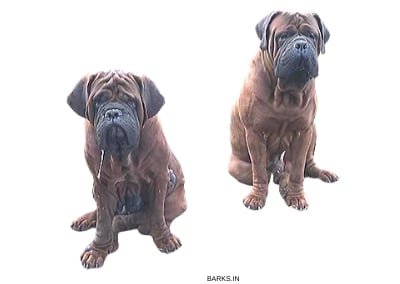
Korea is an East Asian region consisting of two sovereign states, North and South Korea. This ancient and beautiful land is home to some fantastic Asian dog breeds.
Experts believe the first dogs in Korea came from Mongolia. In the 13th century, the Mongols, after several failed invasions, Mongolians finally invade Goryeo.
The ancient landrace of Mongolian, the Bankar dog, came along with the invading Mongols. This Bankar dog is the most likely ancestor of the Korean dogs that we see today. Scientific research to determine the origin of Korean dog breeds doesn’t exist today.
Native Korean dogs and their ancestors
| Breed | Ancestor |
|---|---|
 Korean Jindo |  Bankar Dog |
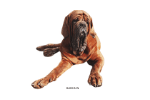 Dosa Dog | 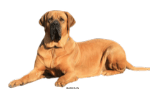 Tosa Inu |
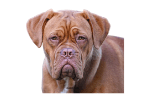 Dogue de Bordeaux | |
 Bloodhounds | |
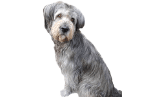 Sapsali | Unknown |
 Nureongi | Landrace |
 Korean Jindo | |
 Pungsan |  Bankar Dog |
 Donggyeongi | Unknown |
 Jeju Dog | Unknown |
Korean Jindo
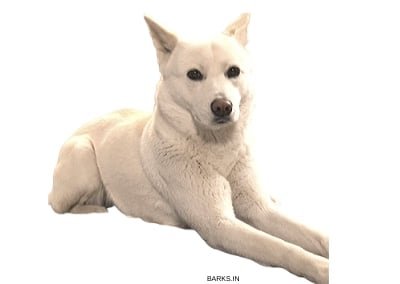
The Korean Jindo is the icon of Korean dogs. The Jindo is a medium-sized, Spitz-type dog. Through an ordinance, the Korean government has made this dog their 53rd national treasure. The Jindo Dogs Guild of Korea, along with the Korean Kennel Federation registers and certifies the Jindo dog.
One cannot forget the story of the loyal Baekgu. This dog returned to its master traveling for seven months and across 300 km. Baekgu came back battered and bruised, and in the process, became a national hero.
History and Origin

The Korean Jindo is an ancient dog from Jindo Island in South Korea. It is difficult to track the precise history of this ancient dog, as this predates written historical records. The lack of scientific research to identify Jindo’s ancestors makes it even more difficult to pinpoint this dog’s origin.
Experts believe Jindos are descendants of the Mongolian landrace, the Bankar dog. Today, these dogs are gaining popularity in several countries. The FCI and UKC officially recognize this breed.
Purpose of the Korean Jindo

The Korean Jindo is an agile, highly alert, medium-sized dog. These dogs are renowned hunters. They specialize in pack hunting and is capable of working with other dogs in a hunt.
People rely on a pack of Jindos for hunts. Unlike sighthounds, which are only suitable for coursing, the Jindos are capable of hunting prey on their own.
Traits
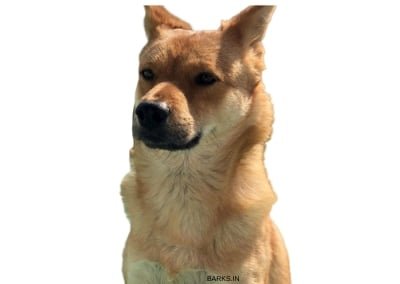
- Classification: AKC – FSS; UKC- Northern Group
- Weight: 18 kg to 25 kg
- Height: 50 cm to 55 cm
- Coat: Medium, double-coat
Jindo is a Spitz-type dog with a square-shaped body. Their head is wedge-shaped, ears are erect, and with a double coat. In Korea, breeders Jindos into two types.
- Tonggol or Gyeopgae: This type of Jindo is muscular than the other second-type.
- Hudu or Hotga: This type of Jindo is lean and slender.
The Jindo looks similar to the Japanese Akita Inu.
Temperament

Jindo is an active dog, with unquestionable loyalty. They are a one-person dog and remain faithful to their first master. For this reason, Korean dog handler Park Nam-sun said Jindos are unfit for service roles.
Jindos remain loyal to their first master all through their life and does not bond well if ownership changes.
This dog is gentle, friendly to the people when socialized early. Like all dogs with high prey drive, Jindo’s need exercise and training. These are dogs that cannot live in small apartments.
This dog is one of the several Asian dog breeds to have a high prey drive. Hence, the Jindo puppy needs to be socialized while they are young. With training techniques such as positive reinforcement, this dog can become an affectionate family pet.
Health

The Jindo is a healthy breed of dog with few health issues.
- The Jindos are prone to hypothyroidism, a condition that affects the functioning of the thyroid gland.
- Entropion is a condition that causes the eyelids to fold inward, causing discomfort to the dog.
- This dog is susceptible to food allergies.
Interesting facts
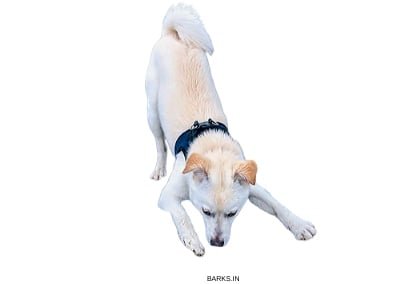
- One of the oldest Korean dogs with Mongolian ancestry.
- Extremely loyal to their master, hence these dogs don’t do well with ownership changes.
- Jindos have high prey drive and are not apartment-friendly dogs.
- Baekgu is the most famous Jindo in Korea. This dog traveled across 300 km to find its original home.
- Positive reinforcement training helps a Jindo pup to get quickly accustomed to its human family.
The Korean Dosa Dog (Korean Mastiff)
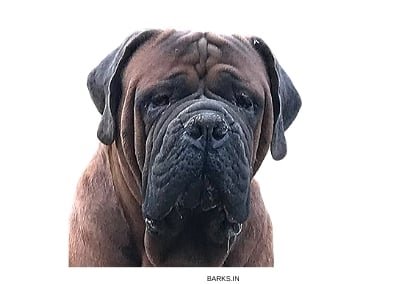
The next dog in our Korean dog breeds list is the Dosa/Tosa dog. The Dosa dog or the Korean Mastiff is a large-breed of Mastiff-type dog from Korea. Mee Kyun Dosa is one of the several Korean names for this dog.
International Kennel clubs such as the American Kennel Club and the United Kennel Club does not recognize this dog. Dosa dog is one of the rarest dog breeds in the world.
History and origin
There are no breeder records or historical records to pinpoint the sources of the Dosa dog. Most Korean breeders agree that this is a modern breed of dog developed in the early 1900s.
Some Korean dog experts say that the Tosa Inu from Japan and the Dogue de Bordeaux were the foundation dogs for the Dosa. Few claim that the Dosa also has Bloodhounds in its genes.
The purpose of Dosa dog

The Dosa dog is wrinkly, adorable, and is good-natured. In Korea, this dog serves two purposes.
- Companion Dog: This dog is good-natured, well-behaved, and is excellent with kids and family. These traits make them a preferred companion dog.
- Show dog: The Dosa’s adorable looks make it a famous dog in Korea. Several kennels promote and show this dog.
Traits

- Classification: Unrecognized
- Weight: 60 kg to 70 kg
- Height: 66 cm to 72 cm
- Coat: Single, short-coat
The Dosa dog is a large breed of dog from Korea. They are a Mastiff-type dog with extremely wrinkled skin. Size, looks, and temperament are the hallmarks of this dog.
Dosas have a square-shaped body. This dog is well-muscled and with a sturdy build. Breeders in Korea prefer a large dog and selectively breed for size.
Temperament
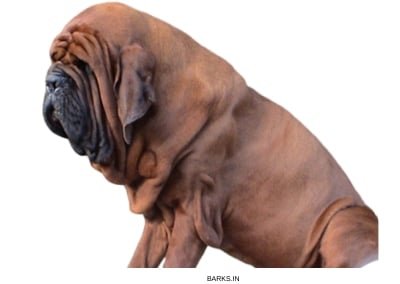
The Dosa dog is unlike most other Mastiffs. They are gentle, remarkably good-natured, and patient with kids. Dog owners should note, even if this dog is well-behaved, kids and giant dogs need close supervision.
The Dosa’s are stubborn, and you will require patience to train them. Ensure your training sessions are short and frequent. Long training sessions typically frustrates this dog.
Health
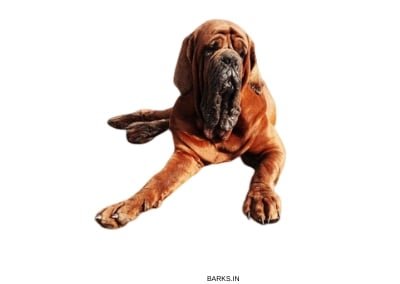
Interesting facts
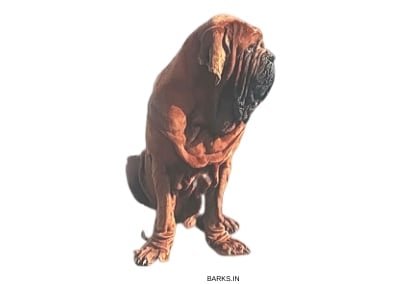
- The Dosa is a modern breed of dog developed in the early 1900s. They are a cross between the Tosa Inu and the Dogue de Bordeaux.
- They are the largest of all the native Korean dogs.
- Despite their large size, the Dosa is gentle and good-natured.
- Mee Kyun Dosa means beauty; these dogs are show dogs.
Sapsali

The Sapsali is a medium-sized native Korean dog. The Korean people consider the Sapsali lucky, and they believe these dogs can dispel ghosts and evil spirits.
Like the Jindo, Korea has ordinances to protect the Sapsali. They are a national monument, according to Korean law.
History and Origin

Sapsali dog is an ancient Korean dog. No one knows the precise origins of this dog. Many Korean dog experts believe this dog originated in the first century AD. This claim makes this dog one of the oldest dogs in the world.
During the world war and the subsequent Korean war, the Sapsali came close to extinction. However, thanks to efforts taken by the government and a handful of breeders, this dog march forward.
The purpose of the Sapsali

In ancient times, this dog was a companion of royalty. Their long shaggy hair, lion-like features, and temperament earned them a privileged lifestyle. Today, the Sapsali is a companion and a show dog.
Sapsaree (Korean for Sapsali) means someone who drives out an evil spirit. Many believe that Sapsali keeps families safe and brings good luck.
Traits
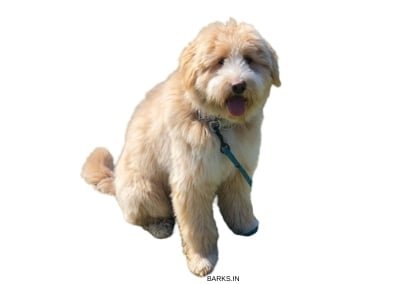
- Classification: Unrecognized
- Weight: 18 kg to 25 kg
- Height: 50 cm to 55 cm
- Coat: Long, Shaggy, double-coat
The Sapsali is a beautiful looking, lion-like, medium-sized dog. They look similar to the Old English Sheepdog. Long hair, lively character, and good luck are the hallmarks of this breed.
The Sapsali’s hair is similar to that of a Lhasa Apso. These dogs are hypoallergic. Like all long-haired dogs, Sapsali’s hair requires constant care and attention. Daily grooming is necessary to prevent mats and tangles.
Temperament

The Sapsali is energetic, lively, and alert. They are renowned for their trainability, intelligence, and playfulness. Sapsali has endless amounts of energy and enjoys running and playing with other dogs. This dog is eager to please, ready to play, and is utterly faithful towards its human family.
Health
Sapsali is a healthy dog. They have excellent immunity towards most canine diseases. The average life span is between 14 to 16 years.
- Hip dysplasia is a painful condition that affects the dog’s back.
- This dog is susceptible to food allergies.
Interesting facts
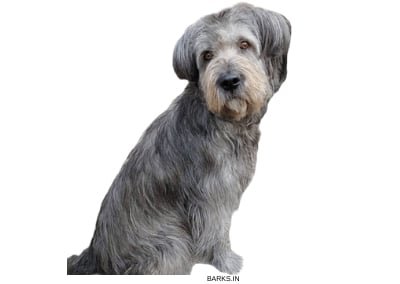
- The Sapsali is the oldest native Korean dog. Experts believe this dog originated in the first century AD.
- Koreans believe that the Sapsali brings good luck and dispels ghosts.
- They are energetic and playful dogs willing to please their master.
- This dog needs constant mental stimulation in the form of play to keep them engaged and happy.
Nureongi dog

Nureongi is a Spitz-type dog found in Korea. They are a medium-sized dog. Smaller than the Jindo, but resemble them closely. This dog sadly is farmed and consumed.
Across Korea, many illegal dog farms and dog meat farm still exists. While the practice of eating dog meat has drastically reduced, there is still work that needs to be done. Humane Society International and other agencies are working with the Korean Government to rescue these dogs.
History and Origin
No one knows the precise origins of the Nureongi dog. One theory states that this dog is a cross between native dogs and non-native dogs. Others claim this dog to be an ancient landrace, the ancestors of the Korean Jindo.
The purpose of the Nureongi
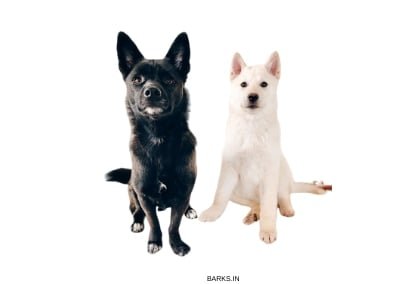
In ancient days these dogs were hunting dogs. Alert, athletic, and agile, these could run down deer and other game working in packs. Today, this is a meat dog; people farm these dogs for their meat.
Traits
- Classification: Unrecognized
- Weight: 18 kg to 25 kg
- Height: 50 cm to 55 cm
- Coat: Medium, double-coat
Nureongi is a medium-sized dog. They belong to the Spitz group of dogs. Bat-like ears, erect tail, square-shaped body, and a wedge-shaped head are the hallmarks of this dog.
This dog has a double coat, a long outer coat, and a soft-dense undercoat.
Temperament
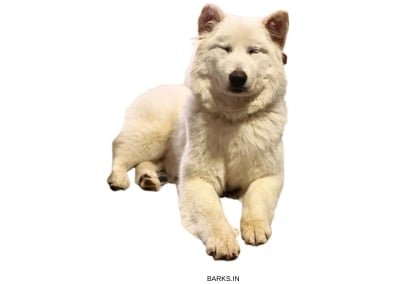
Nureongi is a beautiful dog. They are loyal, loving, and faithful dogs that bond closely with their master. People who live with these dogs say they are excellent with kids, and others in the family.
Health
- They are prone to several Autoimmune diseases. Autoimmune hemolytic anemia, Sebaceous adenitis, etc. are observed.
- Entropion is a condition that causes the eyelids to fold inward, causing discomfort to the dog.
Interesting facts

- In a year, people kill about two million Nureongi dogs for their meat. More recently, dog meat consumption has significantly reduced.
- The Nureongi is loyal, loving, and a gentle breed of dog.
- The Nureongi is a mongrel, a cross between several dogs.
- These dogs are excellent watchdogs.
Pungsan dog

The Pungsan is a medium-sized Spitz-type dog from Korea. These dogs are prevalent in the Kaema mountains of North Korea. North Korean leader gifted his South Korean counterpart with Pungsan dog. In return, the South Korean leader gifted Jindo’s.
The Pungsan to North Korea is like the Jindo to South Korean. This dog is highly intelligent, trainable, and alert.
History and origin
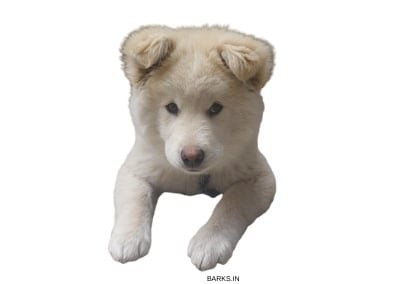
The Pungsan is a North Korean breed of dog. Experts believe this dog to be an ancient breed of dog. There are no historical records to pinpoint its beginnings.
Some experts speculate that this dog arrived along with the invading Mongolian forces. The dogs that remained in the North adapted to the mountainous lifestyle. Through generations of careful selective breeding became the Pungsan. Similarly, the dogs in the South became the Jindo.
The purpose of Pungsan dog

The Pungsan is a hunting dog. They excel in hunting in packs and can coordinate with other dogs during hunts. Unlike sighthounds, that are for coursing game, the Pungsan is a hunter. They can bring down prey without any human help.
Pungsan dogs today are excellent companion dogs. They are intensely loyal, highly intelligent, and have excellent temperament. Today, Pungsan is a rare dog and rarely seen outside of Korea.
Traits
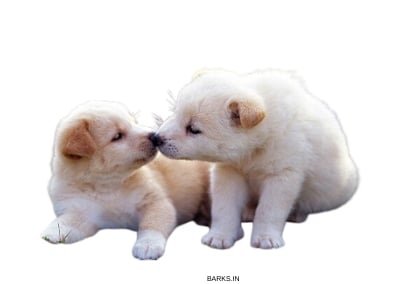
- Classification: Unrecognized
- Weight: 18 kg to 25 kg
- Height: 50 cm to 55 cm
- Coat: Medium, double-coat
Pungsan is a Spitz-type dog with a square-shaped body. Their head is wedge-shaped, ears are erect, and with a double coat. They are well-muscled and sturdy.
Temperament
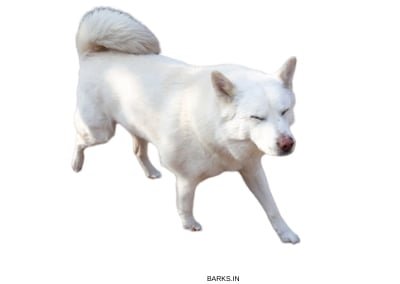
This dog has an excellent and delightful character. They form long and lasting relationships with their master. Early socialization is necessary for this dog, as they can become aggressive towards unfamiliar animals and pets.
A well-trained Pungsan is a delightful companion. These dogs are incredibly loyal and remain faithful to the master. This loyalty makes adoption difficult, as they yearn to be with their first family.
Health

- The Pungsan is prone to canine distemper and needs vaccination.
- Hip dysplasia is a painful condition that affects the dog’s spine.
- Cataracts cause eye lenses to become cloudy and decrease the dog’s vision.
Interesting facts

- Pungsan dog is native to North Korea. This dog looks similar to its South Korean cousin, the Jindo.
- Leaders of North and South Korea exchange Pungsan and Jindo during peace summits.
- This dog is a pack hunter capable of bringing down a deer on its own without any human help.
Donggyeongi dog

Donggyeongi is the next dog in our list of fantastic Korean dogs. This dog is another ancient dog from Korea. Donggyeongi or Daeng Gyeon or Donggyeong Gae is famous for its short-bobtail.
The Japanese decimated the Donggyeongi dog during the Japanese colonial era. They destroyed this dog because of its similarity to ‘Komainu,’ the figures seen in Japanese royal shrines.
Today the Donggyeongi is a protected national monument of Korea. The Korean Gyeongju Donggyeong Dog Association has set up breeding units at Sorabol College and Yangdong Village to promote this breed.
History and Origin
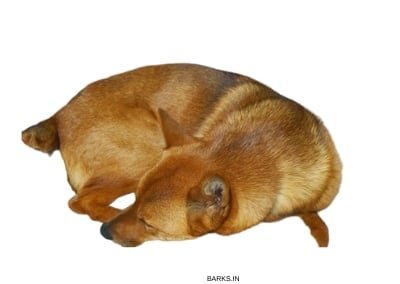
Donggyeongi is an ancient dog from Korea. This dog is a Spitz-type dog with a medium-sized body. Archaeological excavations in the Silla‘s capital revealed clay figurines of dogs with bobtails. Experts date these dolls to the 6th century, making this one of the oldest dog breeds in Korea.
Purpose of the Donggyeongi
This dog is a Spitz-type hunting dog. Their muscular frame, bobtail, and agility give these dogs exceptional hunting abilities. These dogs are pack hunters that excel in flush out prey such as hare or birds hidden in the brush.
Traits

- Classification: Unrecognized
- Weight: 18 kg to 25 kg
- Height: 52 cm to 55 cm
- Coat: Medium, double-coat
The Donggyeongi is a Spitz-type dog from Korea. The most notable feature of this dog is their bobtail. Their tail is similar in appearance to the Australian Stumpy tail Cattle dog.
Temperament

This dog is a typical Spitz and requires expert handling. They are intelligent, alert, and trainable, but they are also stubborn. Hence, this dog is not for novice dog owners.
Early socialization helps this dog adapt to the human environment. When untrained, these dogs can become unmanageable. The Donggyeongi also require vast open spaces for releasing its unspent energy.
Health

These are healthy dogs with an average life span that ranges between 12 to 14 years. The following are some health issues noticed in this breed.
- Hip dysplasia is a painful condition that affects the dog’s spine. Donggyeongi is prone to this due to its small bobtail.
- Cataracts cause eye lenses to become cloudy and decrease the dog’s vision.
- Joint and muscle issues are also prevalent in this breed.
Interesting facts

- The Japanese decimated the population of Donggyeongi to the point of extinction.
- People believe Donggyeongi’s because of its bobtail brings bad luck.
- Donggyeongi’s bobtail is natural and not docked.
Jeju dog

The Jeju dog is extremely rare, even in Korea. They are from the Jeju island in South Korea. Large, sturdy, and muscular, the Jeju is one of the largest native Korean dogs.
This dog, faced extinction in 1986, with only three surviving individuals. The government started efforts to restore this dog on a war footing. Today, due to careful restoration, there are 100+ pure Jeju dogs in Korea.
History and Origin
Several experts believe that this dog originated in China several thousand years ago. Nomadic people from China brought this dog with them before they settled on the Jeju island.
The purpose of the Jeju dog
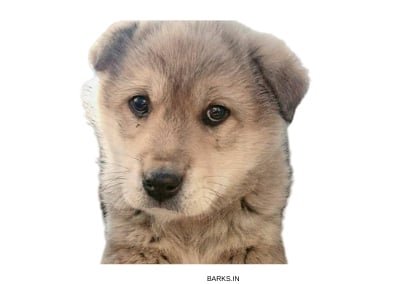
The purpose of this dog is unclear. Many believe these were hunting dogs that came along with people from China. The Jeju dog is alert and is wary of strangers. These traits make them excel as guard dogs.
Traits
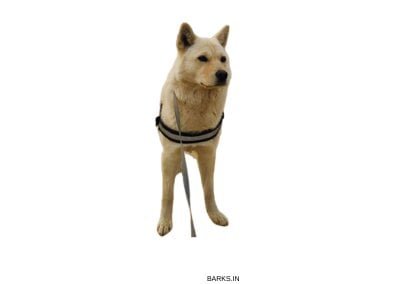
- Classification: Unrecognized
- Weight: 18 kg to 25 kg
- Height: 48 cm to 54 cm
- Coat: Medium, double-coat
The Jeju dog looks similar to the Jindo but is larger. Another difference between this dog and the Jindo is their tails. Breeders say that the female Jeju must look like a fox, whereas the male should be like a wolf.
Temperament
The Jeju is an excellent guard dog. They are alert, robust, and courageous. People who own Jeju also claim that these dogs are highly territorial. Hence, they recommend early training and socialization to prevent aggressive behavior.
Health

The average life span of the Jeju dog ranges between 13 to 15 years. These dogs remain active all through their life. They are prone to the below health issues.
- This dog comes from some of the cleanest places on our planet. They are prone to skin and food allergies. Breeders solely rely on traditional home remedies to cure their dogs.
- This dog is also prone to Mange. Mange affects the dog’s skin causing it to lose its hair.
Interesting facts
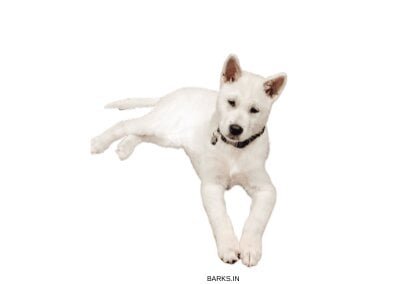
- In 1986, Jeju faced extinction, with only three dogs remaining. Today, thanks to the efforts taken by the government and several fanciers. This dog continues to survive.
- Consumption of Jeju meat was one of the main reasons for this dog to face extinction.
Conclusion: Korean dogs

Korea has some of the world’s exotic dog breeds. The dog ownership rate is going up at the same time dog meat consumption is coming dog. It was a great privilege for us to write about these beautiful dogs.
We intend our post as a celebration of Korean dogs. Our intention is not to pass judgment on the food habits of someone. It is unfortunate to see several bloggers indulge in needless controversies over dog meat consumption just for publicity.

